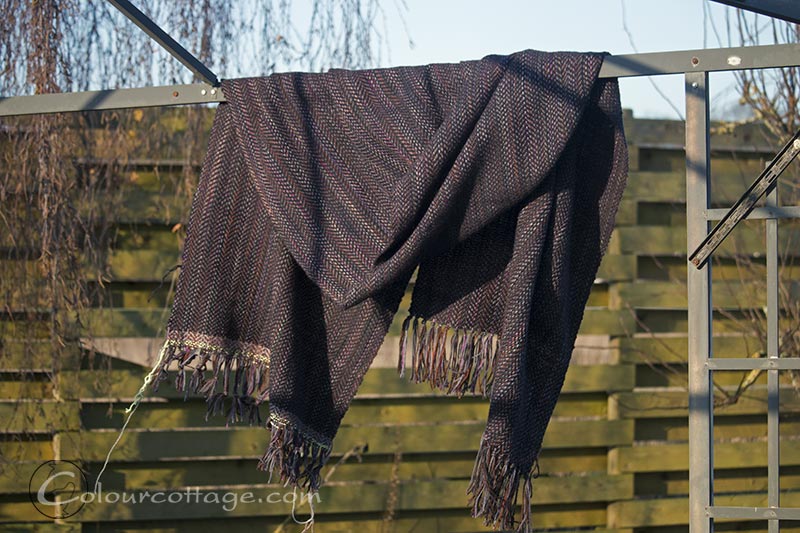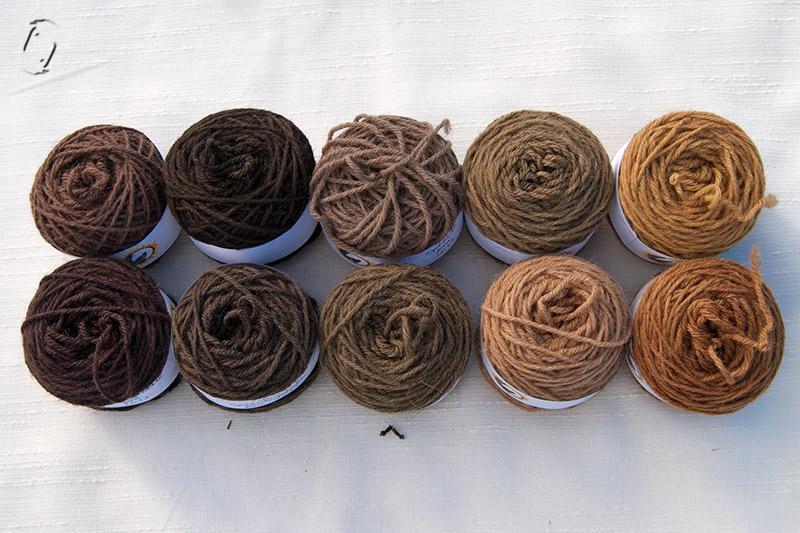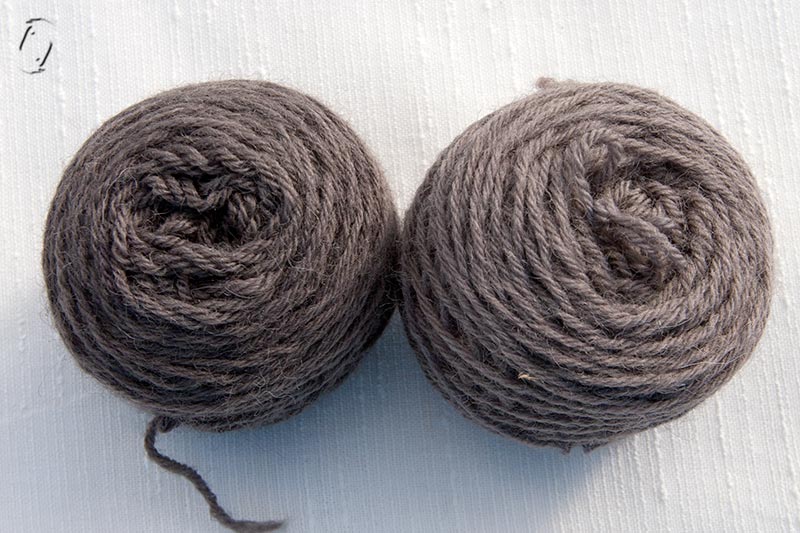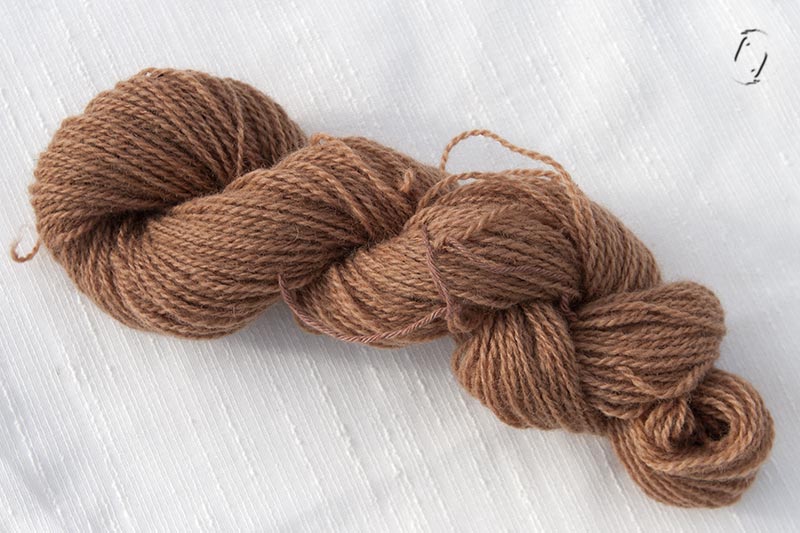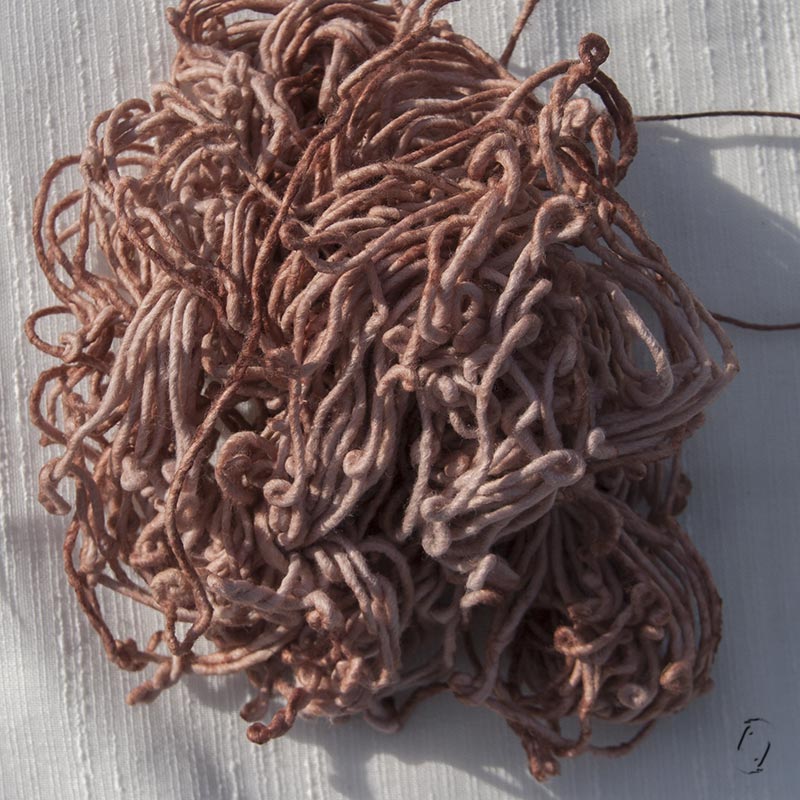First winter day, and a promise of, but not quite real frost at least in this garden. It’s possible that I simply got out of bed too late, though! Uglemor has taken care of that bit of December greeting for me. 😉
Tag: brown
The yarn that wouldn’t
As I mentioned in passing yesterday, I had some non-results with dried walnut on one of my overdye projects. I can’t remember what came first, I think possibly alum and St. John’s Wort solar dye method (= mucky fawn).
Then I tried dried walnut shells, bought in a store, not collected, regrettably. (=beige) Ammonia: no change. Yes, it really lost colour compared to the original.
Another option would be mixing my used dye jars of hollyhock, cochineal and safflower on the odd chance they were not exhausted from the other hanks I showed yesterday. (=this added a slight greyish tint to the beige)
What’s in the bag?
My friend Nina happened to pass by this alpaca being shorn a few weeks ago, and clever her asked what they did with it. So here’s one side for me and the other side went to another wool craving friend. 🙂
Oak leaves
Green leaves picked September 11th. Dried some, frozen some, to dye on silk, cotton and a sample strip wool only. The rest dyed immediately. Test also early summer leaves 2014 as well as brown self-dried.
4:1 fresh, 2:1 dry – oak galls 2% if colour not strong.
Those are my notes in short form. 😉 What that means is, I’ve dyed some wool 4:1 ratio, with and without premordant, and same with an iron afterbath. Then I did it again with oak galls in there too. You don’t quite see it in the photo below, but the dark skeins are actually a deep, chocolate brown, and the ones with iron minus oak galls are greenish.
The oak galls don’t appear to do much to the oak colour itself, it works with the iron. Don’t leave your yarn in there too long unless you are aiming for black!!! Half an hour the old books say. First dye for an hour, add iron, simmer another half.
Technically people use oak to get grey, a wonderful smoky/silver shade. I got all sorts of brown and grey shades, but not that one!
So I’ve saved a few leaves in the freezer as well as dried some to test later. Perhaps the grey is more easily obtained on cotton?
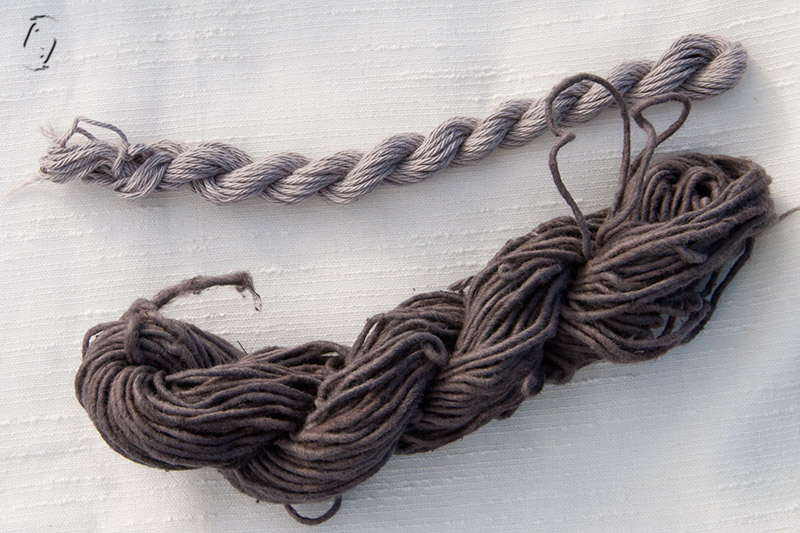
Then I had a stroke of genious if I may say so. Especially since I had not bothered to actually check what other people do, I just followed the book. What if I did NOT dye the yarn first, but plunked it into the iron/oakgall/leaf bath when it was squeaky clean?!
But I’m kinda glad I did follow instructions first, or I would never have gotten all those other shades. Of course now I’m wondering what happens if you just use iron and oak galls…..
Oh – and if you rinse and rinse and the water still comes out black as night – make sure you don’t have a piece of oak gall trapped in your fiber. 😉
Egeblade
De gamle bøger siger: egeblade vægt 4:1 friske, 2:1 tørrede. 2% galæble for at få mørkere farve.
Så det prøvede jeg. Man skal passe på ikke at lade det ligge i gryden for længe efter tilsat jern, med mindre man går efter sort, en halv time er vist passende.
Galæblerne gjorde ikke rigtig noget ved selve farven, de virker først sammen med jern, her var der en tydelig forskel pÃ¥ de “grÃ¥” nuancer jeg fik. MÃ¥ske de flotte sølvgrÃ¥ jeg har set, har været pÃ¥ bomuld? Indtil det faldt mig ind at IKKE gøre som i bogen, nemlig farve i blade først, og sÃ¥ putte jern i til sidst. Og det virkede. Men jeg er da ret glad for, at jeg ikke checkede hvordan andre gør, for sÃ¥ havde jeg jo aldrig fÃ¥et alle de fine brune!
Jeg farvede både ubejdset (det er det, de fleste bruger) samt alun- og kobberbejdset, her var også klar forskel, så man kan let skabe sig en gradueret skala til brug ved flerfarvearbejde.

Fir cones 2
Last year I did a brief experiment with cones and a rather boring result.
I wanted to know, however, if mordanting the yarn would make a difference, so I mordanted the original skein from last year with alum.
Got plenty of cones, boiled them good with some potash and waited until it had cooled and the pH gone down again. In with yarn, heat, sit in a bucket for 2 days.
The yarn is very dark chocolate brown when you take it out, like the dyebath, and feels oddly soapy?! But as soon as you rinse it, this is what you get:
 I then added a silk skein and left in there for a few days. Disappointing light beige, so heated it for a bit. This looked so promising that I actually added the wool one more time! Simmered and left for a day. Very nice brown! Only… the day after they were dry and kinda pink…
I then added a silk skein and left in there for a few days. Disappointing light beige, so heated it for a bit. This looked so promising that I actually added the wool one more time! Simmered and left for a day. Very nice brown! Only… the day after they were dry and kinda pink…
While I was blooded and believed in brown I entered one of my failed cotton skeins (the ones I’ve promised to talk about later). It was almost white with a hint of yellow spots.
Remains to be seen if they are lightfast etc.
Grankogler (rødgran)
Sidste år lavede jeg et kort eksperiment med grankogler, som blev ret skuffende. Men jeg ville alligevel se, om bejdse gjorde en forskel, så jeg bejdsede samme fed og farvede det en gang til!
Sjovt nok er garnet en flot, mørk chokoladebrun når man tager det op, men så snart vandet er trykket ud og man skyller det, så bliver det meget lysere.
For sjov skyld kom jeg sÃ¥ et lille fed silkegarn i bagefter. Det lÃ¥ først i spanden et par dage, det gav kun en meget lys beige, sÃ¥ jeg varmede det op igen, og det sÃ¥ mere lovende ud. Faktisk sÃ¥ lovende, at jeg puttede ulden i en gang til! Fin brun – som blev til rosa, da de var tørret. Meget sært.

